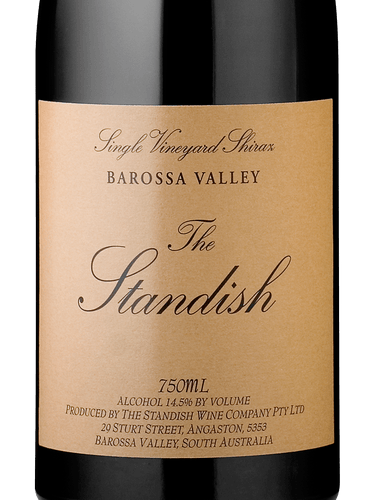Menu

By placing bids on items you acknowledge you are entering into a binding and irrevocable agreement to purchase such items as governed by our Terms and Conditions.

By placing bids on items you acknowledge you are entering into a binding and irrevocable agreement to purchase such items as governed by our Terms and Conditions.

Australia
Free Valuations
Bid for Wine offer free no obligation wine valuations. If you have similar wines to sell, or want a valuation on a collection we can help.
Start ValuationThe Standish Wine company was created when a small parcel of old vine Shiraz was sourced from his parent's vineyard. The century old vines are planted on the typical sand over clay soil profile characteristic of the Vine Vale sub region of the Barossa Valley. Using tiny open top oak fermenters during the winemaking process Dan Standish is able to keep even single rows from a particular vineyard separate, thus developing the intricate flavour and personality of a specific soil type and profile. He uses indigenous yeasts from the vineyard, which is a great way of retaining even more of the specific sites character and flavour. Using traditional open-fermentation and basket pressing yield wines with great grace and equilibrium. Dan feels extremely fortunate to be making wines from some of the oldest most well established vines and soils in the world and without too much interference - from grape to wine ? he is simply trying to convey to the wine drinker what the vineyard has seen during the past year with a message in a bottle. You would be wrong to believe Standish wines are overripe and excessive. Instead, each wine expresses its own, extraordinary personality and the showcases deep concentration, beautiful aromatics, perfectly woven tannins, and pristine acidity which are mesmerising. They are as close to Aussie perfection as any producer can accomplish. Dan?s winemaking philosophy is simple and very hands-off. Essentially, he practices techniques used 300-400 years ago. The vines (planted on original pre-phylloxera rootstocks) are hand tended and the fruit is hand harvested. Fermentation takes place in old, oak vats using only indigenous yeast found on the skins of the berries. On average, it takes three weeks to ferment all the glucose through to alcohol. Old fashioned pigage is used ? foot stomping as it is more commonly referred to - as he believes it?s the best way to slowly extract a little juice from the grapes each day. Dan does this instead of crushing in one sitting, thus creating a long, slow and even fermentation. Post fermentation, Dan and Nicole prefer to use old basket presses. This is a gentler way of extracting the wine from the berries and the best way to eliminate bitter phenolics and harsh grapeseed tannin. Biodynamic, egg shaped, concrete fermenters, which work on the principal of thermal convection, are their ?new? preference. On cooler days, the concrete naturally cools as does the wine inside the shell thus creating a counter-current within the wine. The egg shape maximises the surface area at the base for the lees / solids to fall out. The wine is continuously being turned over the lees, keeping it fresh and vibrant. Old, French oak barriques are used with Dan preferring to use oak. The oak used is sustainably sourced from the centre of France, where the trees are grown in the coolest climates supporting a tighter wood grain. Dan prefers this grain finish, as the oxidation or micro-oxidation in the barrel happens very slowly making his wines more complex. The wines are left on the lees, in barrel for two years and finally, all wines are bottled unfined.